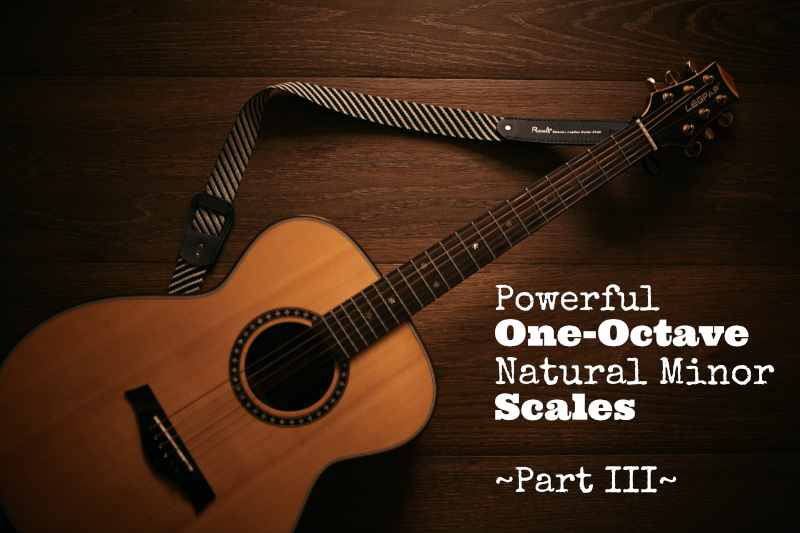May 6, 2021 by Klaus Crow

Good day my guitar friends, we’re in the middle of the One-Octave Natural Minor scales series and we continue with Part III.
In the previous lessons we practiced the scale patterns starting on the Low-E and A string and now we’re going to start with the root note on the D-string. We’re heading into the higher regions of the scale where most of the guitar soloing takes place, so the shapes are getting more relevant to your playing once you go up the strings.
If you just stepped into Part III of the One-Octave natural minor scale series you might first want to check out Part I and Part II.here are the reasons you want to learn this:
Summary One-Octave Natural Minor Scales
The one-octave natural minor scale makes it easy to recognize the shape, the structure, the notes and the intervals of the scale. Since it’s one octave they are a perfect start for beginners and will definitely create new insights for intermediate guitar players.
For anyone who’s into rock, blues and pop music the natural minor scale is a crucial scale, but you will also encounter the scale in many other styles as well.
Starting With The Root Note on The Fourth String
We are learning three natural minor scale shape/patterns with the first (root) note starting on the D-string (4th string).
Tip: Learn and memorize the notes on the D-string so you can instantly recognize the key of the scale when you want to move the scale up or down the fretboard.
Natural Minor Scale Fingering
You can see the left hand fingering (right hand players) for all the scale shape / patterns in the yellow neck diagrams below. The numbers in the dots indicate the fingers.
| 1 = index | 2 = middle finger | 3 = ring finger | 4 = pinky |
Also visualize the shape/form/figure of each scale pattern so it’s easier to memorize and learn all the different scale shapes.
Alternate picking
Play the scale shapes using alternative picking alternating down and up strokes. The first note you play is a downstroke, the second an upstroke, the third one a downstroke, the fourth one an upstroke and so on.
Practice in every Key
First learn each scale shape thoroughly, then learn the pattern in other keys as well (explained in part I).
Let’s roll!
A NATURAL MINOR SCALE – Shape / Pattern #7


A NATURAL MINOR SCALE – Shape / Pattern #8


A NATURAL MINOR SCALE – Shape / Pattern #9


One Octave Natural Minor Scale Assignments Part III
- Learn and memorize each scale shape thoroughly using alternate picking.
- Learn the notes of the D-string.
- Play the shapes in random keys. Speak out the name of the key.
- Re-practice the one-octave Natural Minor scale patterns of Part I and II.
- As an exercise practice the scale shapes from Part I, II and III first in the key of A, then F and finally C.
- Try to create some melody with the new scale patterns.
Easy does it!
To be continued soon.
Do you have any recommendations for a minor scale jam track?
Nick
Hi Peter,
This is a nice jam track to play along with:
A minor Rock Backing track, Am F C G | 111BPM
Best,
Klaus
Will you please reset my 50 cool blues licks, i cant find any acess to them